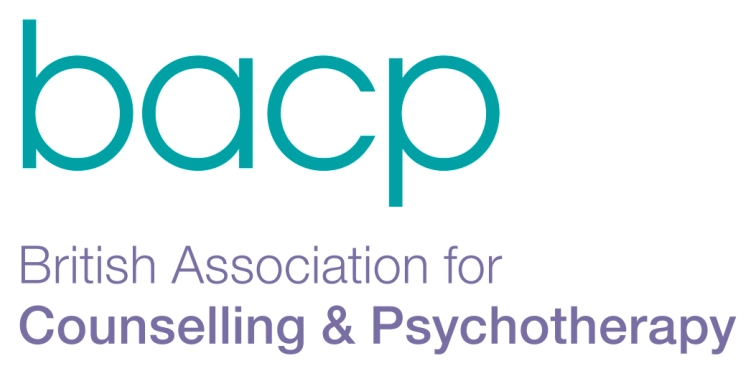Latest News
My latest ramblings.
Enjoy! I definitely got important things to say
My latest ramblings.
Enjoy! I definitely got important things to say
MTCIC, Acorn House, 8a, Looms Lane, Bury St Edmunds, Suffolk IP33 1HE
Tel: 01284 750096
Email: info@mtcic.org.uk
Mentis Tree CIC Company No: 7601041
VAT registration No. 112 1937 48



MTCIC provides a range of services from low cost counselling services and mental health psychological therapies for individuals and groups in Bury St Edmunds & Ipswich, Suffolk. Offering personal development, treatment, lectures, workshops and training on a wide range of conditions including anxiety, depression, stress, addiction, trauma, anger management, cognitive behavioural therapy, eye movement desensitisation and reprocessing to name just a few across East Anglia, Suffolk.
The Counselling-Directory is a large website that lists all Counselling Services in the UK.
We may request cookies to be set on your device. We use cookies to let us know when you visit our websites, how you interact with us, to enrich your user experience, and to customize your relationship with our website.
Click on the different category headings to find out more. You can also change some of your preferences. Note that blocking some types of cookies may impact your experience on our websites and the services we are able to offer.
These cookies are strictly necessary to provide you with services available through our website and to use some of its features.
Because these cookies are strictly necessary to deliver the website, refusing them will have impact how our site functions. You always can block or delete cookies by changing your browser settings and force blocking all cookies on this website. But this will always prompt you to accept/refuse cookies when revisiting our site.
We fully respect if you want to refuse cookies but to avoid asking you again and again kindly allow us to store a cookie for that. You are free to opt out any time or opt in for other cookies to get a better experience. If you refuse cookies we will remove all set cookies in our domain.
We provide you with a list of stored cookies on your computer in our domain so you can check what we stored. Due to security reasons we are not able to show or modify cookies from other domains. You can check these in your browser security settings.
These cookies collect information that is used either in aggregate form to help us understand how our website is being used or how effective our marketing campaigns are, or to help us customize our website and application for you in order to enhance your experience.
If you do not want that we track your visit to our site you can disable tracking in your browser here:
We also use different external services like Google Webfonts, Google Maps, and external Video providers. Since these providers may collect personal data like your IP address we allow you to block them here. Please be aware that this might heavily reduce the functionality and appearance of our site. Changes will take effect once you reload the page.
Google Webfont Settings:
Google Map Settings:
Google reCaptcha Settings:
Vimeo and Youtube video embeds:
You can read about our cookies and privacy settings in detail on our Privacy Policy Page.
Business Privacy Policy
Shedding light on Seasonal Affective Disorder.
Shedding Light on Seasonal Affective Disorder: Tactics to Avoid the Winter Blues.
Seasonal Affective Disorder, aptly abbreviated to S.A.D is a type of depression that can come and go in a seasonal pattern. More commonly this disorder is associated with the winter season as this is when symptoms tend to be more apparent and severe. However, this isn’t limited to the colder months, as SAD is specific to the individual some may experience symptoms in the summer months if they are less likely to cope with warmer weather.
Symptoms of SAD –
Diagnostic and Statistical Manual of Mental Disorders-V (DSM-V)
Seasonal Affective Disorder is classified as a subtype of depression by the DSM-V. Upon reading the DSM-V, it appears that SAD shares some of the symptoms of depression; however, the fact that it is seasonal distinguishes it as a subtype. SAD can be marked by recurrent episodes of unipolar state of depression. Unipolar traits exhibit intense sadness, melancholia or despair that has got serious enough to be disruptive to an individual’s daily functioning and/or social activities.
The S.A.D Condition –
Aside from the seasonal effects of this depressive subtype; individuals suffering from SAD experience atypical symptoms. As a multi-factorial condition, the disorder effects the chronobiological mechanisms of the body. These include the likes of our circadian rhythms, melatonin, serotonin turnover and photoperiodism.
Tactics to Avoid the Winter Blues –
Remember, brighter days are on the horizon, and with these tactics, you can thrive even during the darkest of seasons. If you or someone you know is experiencing symptoms of SAD, please seek professional help for accurate diagnosis and appropriate treatment. This can be done through us here at MTCIC; our counsellors are well trained in this area and can provide guidance, support and treatment to all individuals suffering.
Embracing Solitude: The Art of Enjoying Your Own Company
In modern society our everyday lives can be a whirlwind of social interactions and external stimuli. However, with social exertion there must come a time for solace. Learning to enjoy your own company can increase personal growth, encourage self-discovery, and help find inner peace. In this blog post, we will explore techniques to help you embrace and enjoy that alone time.
In a reality that frequently glorifies constant social interaction and validation, learning to enjoy the time you have with yourself is a valuable skill. By using these aforementioned techniques you have the ability to transform on a journey of self-discovery and personal growth.
The Importance of Sleep for Mental Health: Tips for Improving Your Sleep Routine.
As society evolves and our world is becoming more fast-paced, sleep can take a backseat to the numerous responsibilities and activities that consume our day to day lives. However, the importance of quality sleep is vital for maintaining our mental health. Sleep plays a significant role in stabilising our emotional well-being and cognitive function. This blog aims to delve into the importance of sleep and how you can enhance your sleep routine.
The Link Between Sleep and Mental Health
Previous literature demonstrates an intimate connection between mental health and sleep. Lack of and poor-quality sleep can have a detrimental impact on our emotional and psychological well-being.
Tips for Improving Your Sleep Routine
So, how can you enhance your night-to-night sleep?
Making your sleep a priority is a powerful step to maintaining and enhancing optimal mental health. Remember, giving yourself a good night’s sleep is an essential, not a luxury.
The Link Between Physical and Mental Health: The Importance of Exercise.
We can often find ourselves caught up in the demands of daily life in today’s fast paced world, neglecting our physical and mental well-being. However, it is vital to understand that our physical and mental health are intricately connected; taking care of one aspect positively impacts the other but vice versa on negative impacts. One of the most powerful tools to elevate both these factors is exercise. This blog aims to explore this connection and highlight the power of exercise in maintaining a healthy and balanced lifestyle.
Physical Health and Exercise
To maintain physical health, a regular form of exercise is paramount. Such forms could include physical activities like jogging, cycling, swimming, strength, or aerobic training offer multiple benefits to the body. Exercise strengthens not only our muscles but is excellent for heart health and bone density. Having an active relationship with exercise in turn governs weight control and heavily reduces the risks of chronic diseases (heart disease, diabetes, and certain types of cancer), and improves overall longevity.
The Mental Health Connection
In a parallel to the physical benefits, exercise has an equally significant impact on our mental well-being. Physical activity releases important commonly known ‘feel-good’ endorphin hormones; these work to increase your sense of well-being, reduce stress and ease symptoms of depression and anxiety. During exercise, the production of brain-derived neurotrophic factors (BDNF) rapidly increase. This is a protein that aids the growth and survival of nerve cells in the brain, thus, elevating cognitive function and decreasing neurodegenerative disease risks.
Stress Reduction and Mood Enhancement
A natural stress reduction is provided through exercise. Through improved blood circulation and the triggering of the body’s natural relaxation response, physical activity helps our bodies release tension and stress. Regular exercise can raise energy levels, sleep quality, self-esteem, and body image. These beneficial adjustments to our physical health help us feel happier, have fewer depressive symptoms, and generally be more satisfied with our lives.
Cognitive Function and Exercise
As a huge accelerator of blood flow to the brain, exercise is excellent at enhancing cognitive function. Studies show that regular exercise improves memory, attention span and problem-solving skills, thanks to the extra oxygen and nutrients heading to the brain. Ultimately, long term this helps to prevent any cognitive declines or risk of age-related memory loss.
The link between mental and physical health is pivotal in maintaining a healthy lifestyle. Making exercise a priority should be for both your physical and mental wellbeing. Fundamentally, increasing bodily fitness, boosting mood, and increasing cognitive function – leading to an overall healthier and happier life.
Journaling – can it benefit you?
Journaling involves writing down your feelings, thoughts and experiences in a personal journal or diary. Diary writing can be extremely beneficial to aid self-expression and self-reflection, increasing both mental and emotional well-being.
How can journaling benefit you?
Don’t know where to get started? Here are our favourite prompts that could inspire your journaling and personal growth journey.
With personal reflection there are no rules. It’s a time for yourself that can be tailored to your preferences, needs and desires. Write regularly, without judgment, and allow your thoughts to flow freely. Over time, you will discover the unique benefits that journaling can bring to your life.
Gestalt Theory
Gestalt theory was initially developed by husband and wife, Fritz and Laura Perls. Early assumptions of humans by Mr Perls left this theory in a heartless state whereby Fritz would outwardly confront and challenge his clients. Now in the modern day, this theory has become increasingly more compassionate and empathetic, with thanks to wife Laura and other contemporary therapists; Polsters and Zinker.
Kurt Koffka, a Gestalt psychologist, succinctly stated what he believed to be the Gestalt theory’s fundamental tenet: “The whole is other than the sum of the parts.” The way the human eye and brain interpret a single shape is distinct from how they interpret that shapes’ component pieces.
Principles that underpin the Gestalt therapy:
Many people can benefit from gestalt theory, particularly those who battle with anxiety, depression, low self-esteem, relationship issues, low self-efficacy, and physical issues like migraine headaches, ulcerative colitis, and back spasms.
Techniques –
Empty chair – The empty chair invites patients to explore and express their feelings towards a fictional person or a part of themselves. The goal is to converse with the vacant chair as if it were filled by a different person or aspect of themselves. The client gains understanding of their feelings and thoughts as a result. The therapist may assist the client in this process, assisting them in verbalising their emotions before using the empty chair to encourage a conversation that might result in closure or acknowledgement of their experiences.
‘I’ statements – The use of “I” phrases encourages clients to take responsibility for their feelings rather than assigning blame to others.
Confrontation – ‘To challenge or frustrate the client’. When utilised properly, it is a priceless tool for bringing clients into a clear knowledge of their realities. Confrontation is a tactic that cannot, however, be utilised with every client due to sensitivity.
Body Language – Gestalt theory encompasses the physical sensations within the body during therapy and troubles. Giving attention to the body can create an awareness in the clients’ emotions. Therapists may ask where in the body a certain feeling is coming from, e.g., butterflies in the stomach.
Exaggeration – Following on from body language these physical senses can be repetitious. A repeated physical action from a client may be talked about and said client may be asked to exaggerate the movement and speak about the emotions it brings up.
Creative activities – Many gestalt therapists will encourage their patients to become more aware of their surroundings, remain in the present, and learn how to process the present by engaging them in hobbies like sculpting, drawing, and painting. With the help of this method, the patient can become more conscious of their feelings and the continuing healing process.
Gestalt therapy urges patients to pay attention to their current challenges while considering their entire selves. A therapist can help someone in analysing their point of view to identify self-defeating thought patterns or limiting beliefs. Gestalt therapy specialises in developing a fresh perception.